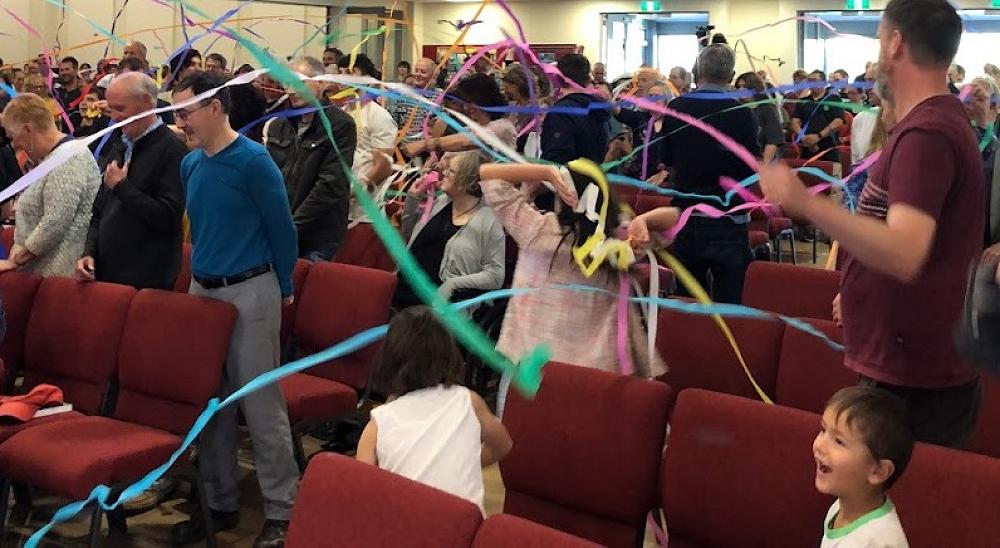
Imaginative play
How might engagement in creative activity help express and foster spiritual connection?
The creative arts have been used for centuries in churches and other spiritual contexts but, other than singing, creative approaches that involve attendees are not widespread. Helen Wilderspin, an Anglican priest and student at St John Theological College, wondered whether and how creative play might contribute to people's engagement with the holy/divine/sacred. She explored this question for her Doctorate in Professional Practice at Otago Polytechnic.
Helen started by defining "creative play":
"Creative play is a way of being and a method of experiential learning that builds on and embodies a person’s experience, imagination, and the things around them to create new ideas, ways of seeing, possibilities, and ludic practices for the person and for others."
Appropriately, she used creative play methods for her cyclical action research, designing and delivering eight creative liturgical services, running three workshops with St John students, and working with a group of students over a six month period to plan and then lead services. She sought to evoke a playful mindset and stimulate the imagination of both participants and service attendees.
Helen found that the following six conditions were helpful in her context to foster and develop creativity amongst adults in a worship service:
- A ludic (playful) mindset;
- A facilitator/guide/role model;
- The creation of a team culture of creativity;
- Shared learning experiences designed to stimulate imagination;
- A variety of locations for creative play activities; and
- A reflection/action process.
Together these can help provide opportunities for people to express wairua, their spiritual side of themselves - connecting with each other, with life around us, and with the transcendant. She concludes that it would be beneficial to train theological students, for example, to value and facilitate creative engagement.
